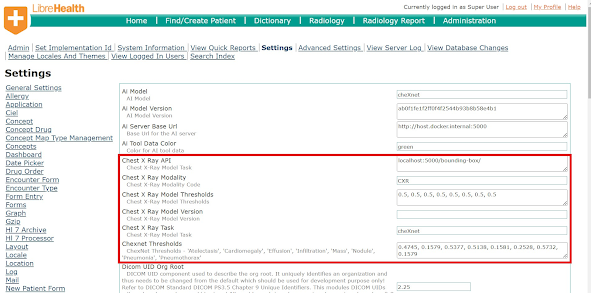Wrapping Up Community Bonding and Delving into AI Models for Medical Imaging
Prepping for GSoC
The final week of community bonding period ends and official coding begins. I was able to describe myself, set up my blog, and set up payment mechanisms, among other things. Google's instructions were spot on. I still need to set up my tax forms, for which I contacted Google. They told the tax forms will be available by June 5th, and I would have to file them by July 1st (for anyone who is interested).
Exploring the Open Source Community
I also read through the blogs of my fellow GSoC colleagues at LibreHealth. It was great reading about their journey and how they ended up being chosen for GSoC. They are all really capable. They explained about their exciting projects to which they are contributing towards. I was able to understand what an open source community is and get an essence of how people come together to build great products.
Unfortunately, I have not yet had the opportunity to interact with my mentors about my GSoC project proposal. I heard on other project channels that they, too, are swamped with semester-ending activity. I am reminded of how important communication is for successful GSoC projects.
Researching Medical Imaging Datasets and Models
Meanwhile I've been able to go through the code base. To get a head start I have looked at open source health care datasets available for building computer vision models. I stumbled across the TCIA (The Cancer Imaging Archive) dataset. It had all sorts of datasets for medical imaging and is a great data repository.
For Mammography dataset I was able to find a large open source dataset CBIS DDSM . I used the nbia data retriever tool to download the dataset. I was getting my hands dirty by developing a VGG16 classifier model to classify malignant and benign tumors in the Mammograms (WIP). I also came across a research paper that talked about a more complex method to model it and produce promising accuracies. The code source, although is messy, lot of boiler plate code and not updated. I would look at feasibility and rebuild it.
For segmentation the first thing that came to my mind is the SAM model (Segment Anything Model) from Meta which was recently launched. I tried my luck on finding research papers on the same but for medical imaging. I came across a great paper which also provided source code for implementation. I will dig through the code and understand how it can be implemented.
Next Steps
Looking ahead to the coming weeks, my focus will be on researching and documenting various AI models that demonstrate effectiveness across different modalities. I aim to integrate these models into my project and initially implement them for one modality, closely examining the challenges that arise and working towards their solutions.
As the community bonding period concludes, I am excited to embark on my GSoC project journey. Despite not having interacted with my mentors yet, I have been proactive in exploring datasets, developing initial classifier models, and investigating segmentation techniques. With research and implementation plans in place, I am eager to collaborate with my mentors and begin coding for my project in the weeks to come.


Comments
Post a Comment